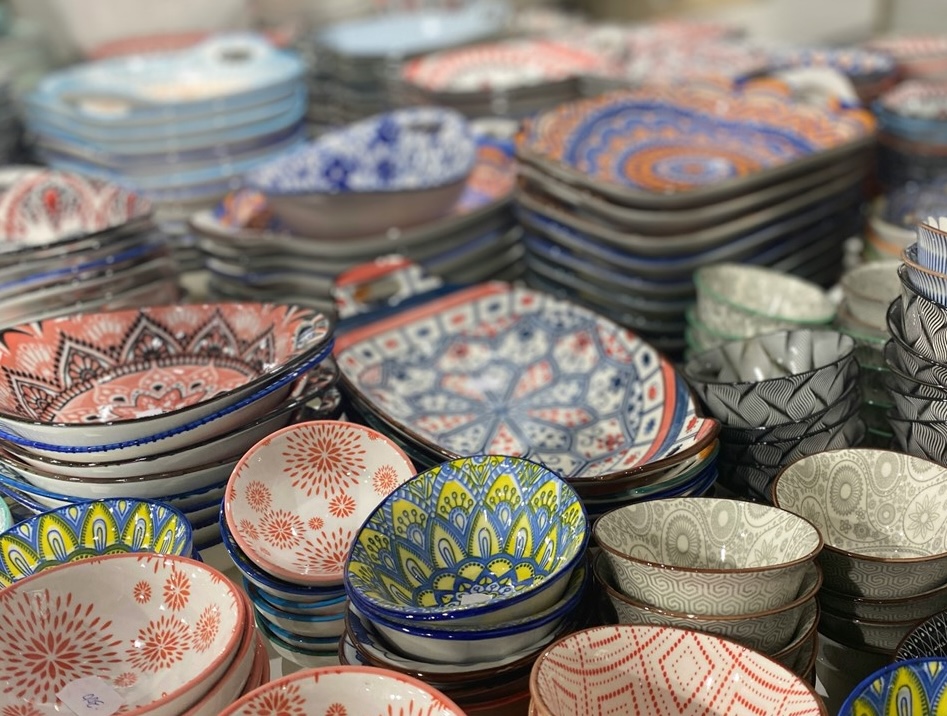What Makes Pottery Food-Safe?

✅ What Makes Pottery Food-Safe?
For a piece to be food-safe, it must be:
- Non-porous (so liquids and bacteria can’t seep in)
- Fully sealed with a food-safe glaze on all surfaces that touch food or drink
- Fired to maturity (so the clay and glaze mature together)
Let’s look at common clay types—and how they hold up:
🏺 Stoneware (What We Use!)
Our studio clay—Cone 6 Standard 225 brown stoneware—is ideal for functional pottery. When fired to Cone 6 (~2232°F), it vitrifies (becomes glass-like), with only 1–2% water absorption. That means it’s strong, durable, and naturally resistant to moisture.
- Glazing: Always glaze surfaces that touch food or drink. Unglazed feet are fine (and expected!), but never leave the interior of a mug or bowl bare.
- Food-safe? ✅ Yes—when properly fired and glazed with food-safe glazes.
- Watch for: Crazing (fine cracks in the glaze), which can trap bacteria over time. If your glaze crazes, it’s best used for dry storage or decoration.
🏺 Porcelain
Very dense and smooth, with almost 0% absorption when fired high. Beautiful for delicate tableware.
- Food-safe? ✅ Yes—especially when glazed.
- Note: Unglazed porcelain can be food-safe due to its density, but glazing makes it easier to clean and more hygienic. Avoid textured unglazed surfaces—they can harbor food particles.
🏺 Earthenware
Fired at lower temperatures, so it stays porous—like a terra cotta pot. It must be fully glazed to hold liquids safely.
- Food-safe? ⚠ Only if completely sealed with a food-safe glaze.
- Caution: Even a tiny unglazed spot (like on the foot) can absorb water over time, weakening the piece or causing glaze failure.
🚫 Clays That Aren’t Food-Safe (and Why)
Some materials look like pottery but aren’t meant for food:
Air-dry clay: Dissolves with moisture—great for sculptures, not for mugs.
Polymer clay: Contains plastics; not fired in a ceramic kiln. Use only for jewelry or decor.
Paper clay (commercial): Often too porous unless specially formulated. Stick to ceramic clays for functional work.
💡 In our studio, we only use Cone 6 stoneware—so if you’re working here, you’re already on the right track!
🎨 Glazes: The Final Seal of Safety
Glaze isn’t just color—it’s your food-safe barrier. To keep things safe:
- Use only lead-free, food-safe glazes (all our studio glazes are labeled as such).
- Cover all food-contact surfaces completely—no pinholes, thin spots, or bare clay.
- Avoid glazing the foot (to prevent sticking in the kiln), but keep glaze at least ¼ inch above the bottom.
- Watch for defects: Crawling, pinholes, or crazing can create tiny hiding spots for bacteria. When in doubt, use the piece for dry goods or display.
🤝 Why This Matters in Our Community
Many of you sell your work through our consignment shelves or give pieces as gifts. Knowing your pottery is truly food-safe is a form of care—for your customers, your loved ones, and your craft.
And if you’re ever unsure? Test it! Make a small cup, glaze it fully, and use it yourself for a few weeks. See how it holds up to washing, hot tea, or dishwasher cycles (if labeled dishwasher-safe).
Final Thought
Food-safe pottery isn’t about perfection—it’s about intention. When we fire to temperature, glaze with care, and honor the function of our pieces, we create objects that don’t just hold food… they hold trust.
Happy (and safe) making,
Your Studio Community
Customer Testimonials
Our participants share their experiences—many discover not just pottery, but a creative community.






